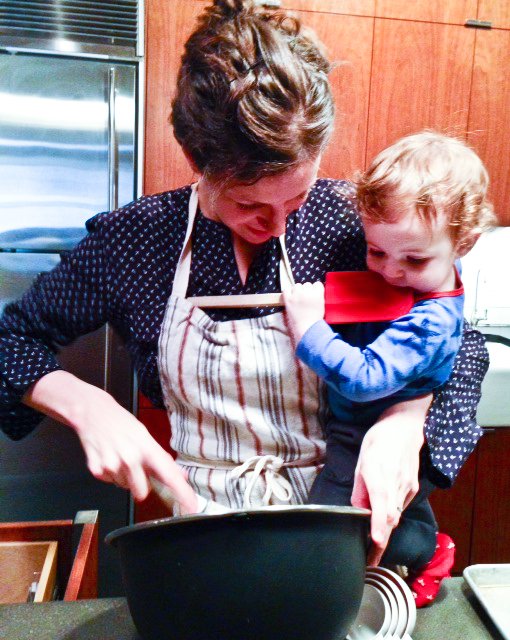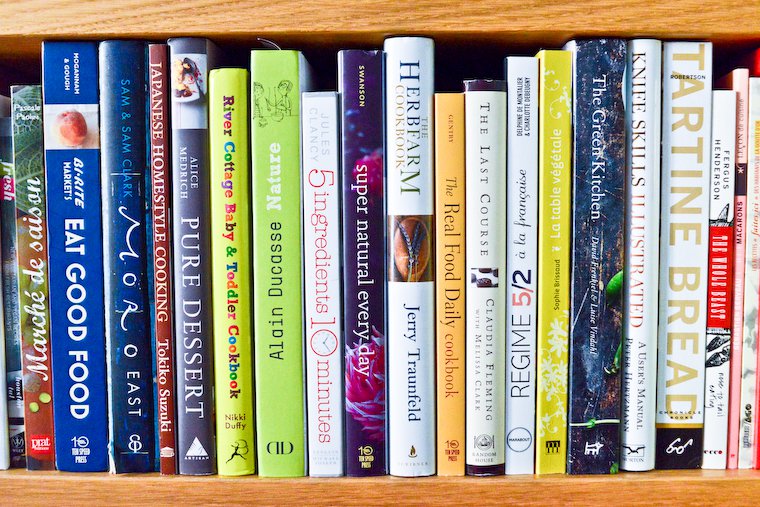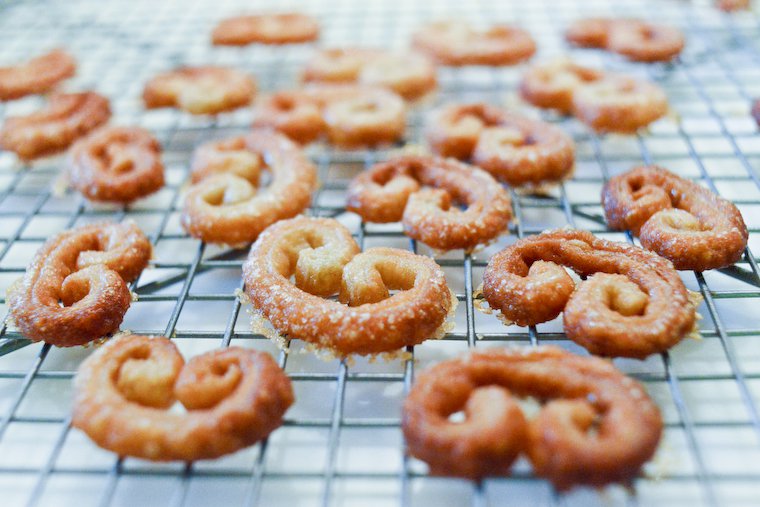Aria Beth Sloss is a writer, and the author of the novel Autobiography of Us, which has just come out in paperback.
She also happens to married to Dan Barber, a hero of mine and the iconic chef of Blue Hill in NYC, where they both live. I’ve been in touch with Aria ever since I published this fridge Q&A with Dan: I had mentioned her novel was about to be published, and she thanked me and offered to send me an advance copy, which I thoroughly enjoyed.
Dan and Aria had a little girl last year, and of course, as part of my Parents Who Cook series, I had to ask how the household’s cooking life has changed since then. Aria shared her approach and tips with great generosity, and I hope you enjoy delving into it — and trying the two recipes she provided — as much as I did.
Edith turned one last month. As divine retribution for all the times I scoffed at parents who ascribed real, complex temperaments to their infants, Edith has been the person she is now since the day she was born — cheerful, opinionated, determined, and hilarious. I never dreamed someone so small could make me laugh so hard.
Did having a child change the way you cook?
I’m embarrassed to answer this, because the change has less to do with the way I cook than the fact that I find myself cooking at all. I’ve always been a baker; my husband is a chef, so for many years, we had the perfect arrangement. Then we found ourselves with this new member of the household, who couldn’t, turns out, survive on cake and cookies.
When Edith started eating solids, around six months, we took what felt like a huge leap in faith by deciding to forgo purees (my heart was in my mouth for most of the first month’s meals) and give her modified versions (less salt, no windpipe-sized beans, etc) of what we ate instead. [Note from Clotilde: this is an approach often referred to as baby-led weaning.] Anxieties aside, it seems to have suited us all very well.
We found ourselves with this new member of the household, who couldn’t, turns out, survive on cake and cookies.
When my husband is home for dinner, he makes dishes very similar to those he made before our daughter was born — beautiful omelets, grain and roasted vegetable salads, tartines with a soft cheese, a lacing of vinegar, and a sprinkling of herbs — and we all eat them together.
On the nights he’s at the restaurant, I’ve developed a few fail-safe recipes: lentil soup (who knew babies like soup?), less aesthetically-pleasing but acceptable omelets, avocado mash on toast, baked sweet potato with miso butter [recipe below!], and a few simple pasta dishes like soba with toasted sesame oil and broccoli. Plus, I’ve started experimenting with sprouted wheat flour, which makes baked goods a lot more nutritious.

Aria and Edith in the kitchen at Blue Hill.








